Tampa Bay Lightning, The Syracuse Crunch, And The Orlando Solar Bears.
A comprehensive guide for understanding minor league hockey.
Believe it or not, the Nikita Kucherov’s of the NHL don’t wake up one day on an NHL roster — there are years of development & growth that precede our fandom.
The American Hockey League (AHL) & the East Coast Hockey League (ECHL) are the professional “minor” leagues for the NHL. These leagues are where a majority of NHL players start their careers.
I’m sure you’ve heard players being recalled or reassigned to different teams — these transactions regard the “minor leagues” of the NHL.
This week, we break down how these leagues impact the Bolts & what we need to know as Lightning fans.
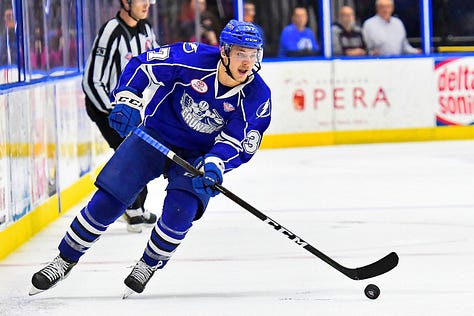
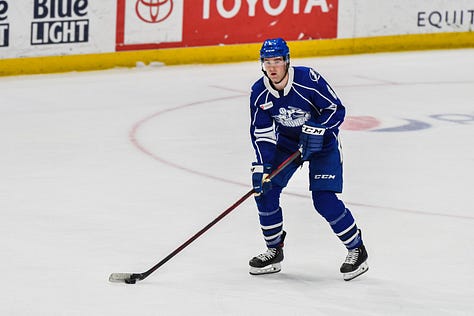
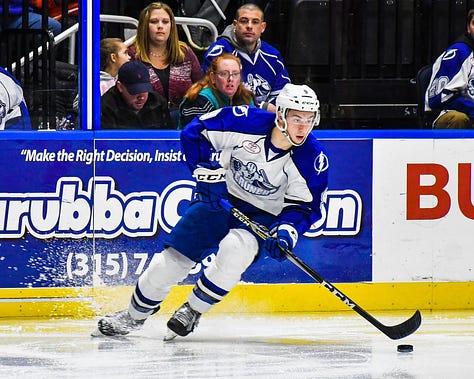
AHL/ECHL:
The AHL & ECHL are the two leagues you need to know; the AHL is the higher of the two.
Both of them are professional leagues where hockey players around the world - regardless of NHL status - can sign contracts for specific teams. Each of them mimic the NHL’s schedule & structure.
In the AHL, there are 32 teams that play from October 10th-April 20th, 2025.
In the ECHL, there are 30 teams that play from October 17th-April 12th, 2025.
In contrast…
In the NHL, there are 32 teams that play from October 7th-April (??1), 2025.
As you can see, these leagues - the AHL and ECHL - are very similar to the NHL. This is by design:
Every NHL organization is affiliated with 1 team from each league - excluding two exceptions, the Ottawa Senators & Columbus Blue Jackets. These two teams have an AHL affiliate, but they are not affiliated with an ECHL team.
Ottawa & Columbus are the only NHL clubs without an ECHL affiliate; every other team in the NHL is affiliated with 1 AHL team & 1 ECHL team.
AHL Affiliates: https://theahl.com/nhl-affiliations-2024-25
ECHL Affiliates: https://echl.com/teams/nhl-ahl-affiliations
These affiliations allow the NHL clubs to develop players who are not ready for NHL-caliber hockey. In fact, most NHLers spend time in the ECHL or AHL at some point in their career. It is, often, the first step for NHL players following the draft.
Some players play 1 year in the AHL; others play 4+ years in the AHL. Some players are moved down a league to the ECHL, while others skip both leagues all together, starting in the NHL.
Ultimately, the affiliations that NHL organizations have with these two professional leagues allow general managers to move players around based on their skill level & developmental needs.
With the ECHL & AHL mimicking the structure/schedule of the NHL, it is common to see players reassigned or recalled between leagues throughout the year.
HOW IT WORKS:
The ECHL/AHL are independent leagues. Despite being affiliated with NHL clubs, they have their own head coaches, their own general managers, their own staff, etc. That being said, the ECHL/AHL are like the children of the NHL club.
Let’s use the Bolts as our example:
At the NHL level (parent), Julien BriseBois is the general manager - the boss. He oversees the team & their needs, including both the ECHL & AHL affiliate teams. While he oversees all three leagues, he delegates responsibility to other individuals.
At the AHL level (child), Stacy Roest2 is the general manager for the Syracuse Crunch - the Bolts’ affiliate team. Stacy Roest is an assistant general manager for Julien BriseBois at the NHL level, but he’s also the GM for the Crunch at the AHL level.
You can think of it as if the Crunch live under the care and supervision of the Lightning. They are a full-functioning human being apart from Mom/Dad - aka, the Tampa Bay Lightning, but while they’re independent, they’re still highly connected. And, ultimately, if Mom/Dad - the Bolts - request something, the Crunch will listen and oblige.
The Syracuse Crunch run practices, play in postseason hockey, and ultimately compete for their league’s Stanley Cup, called the Calder Cup. The same goes for the ECHL — only, their Stanley Cup is called the Kelly Cup.
Another way to view the AHL/ECHL in relation to the NHL is considering the minor leagues as a vehicle and the NHL as the destination:
The vehicle - aka the AHL & ECHL - have steering wheels, tires, axels, etc. that make up their existence - I.E., practices, locker room culture, uniforms, travel, schedule, rivalries, etc. With each nut & bolt that make up the vehicle, they still ultimately serve one purpose: getting to their destination - aka the NHL.
The vehicle will be serviced, improved, and maintained, but, at the end of the day, their goal in everything they do is reaching that destination - their goal is improving the NHL.
P.S. - The ECHL is beneath the AHL as far as levels of play. Players that aren’t quite at the level of AHL play will be assigned to the ECHL affiliate. If their play improves, they will be recalled to the AHL. On the other side of that coin, if someone in the AHL experiences a performance decline, the AHL team can reassign that player to the ECHL. That being said, the ECHL operates essentially the same way the AHL does. Therefore, as we continue this guide, you can substitute ECHL where AHL is written & vice versa.
QUESTIONS:
1) Does the AHL pay their own players?
Yes & no. Most players on AHL rosters are on NHL contracts. This means that the NHL club will be paying the contract. NHL players can be reassigned to the AHL affiliate team, but they will still receive their contractually agreed upon NHL salary. With that being said, there are exceptions. Most notably, newer NHL players are often signed to “two-way” contracts. This mean that the player makes a lesser salary if they’re playing in the minor leagues. Certain players, though, can sign an AHL-only contract, meaning the AHL team pays them. If that player garnered enough interest from the NHL club, the NHL team would have to sign them before being able to recall them to the NHL.
2) Can any player get reassigned to the AHL?
Any player can be reassigned, absolutely. However, this is where things get complicated. In order to protect the parity in the NHL, players have to clear waivers before they can be reassigned to the minor league affiliate teams. For instance, this past season, for the Bolts, we put F Connor Sheary on waivers with the intention of reassigning him to Syracuse. Once we placed him on waivers, though, every other NHL team had 24 hours to decide if they would like to sign Sheary. If a team wanted to “claim” Sheary, then that team would’ve had to absorb the entirety of Sheary’s contract. Unfortunately, no team claimed Sheary, so the Bolts retained him and subsequently reassigned him to their affiliate team. Newer players in the NHL are exempt from this waivers process.
3) How many times can the NHL team reassign/recall players during the season?
For most of the NHL season, there is no limit to the number of transactions a NHL team can make. They can recall/reassign players as much as needed.
However, once the trade deadline day arrives, the NHL clubs are held to four recalls for the remainder of the season.
This gets tricky for most teams, though, because, in order for the player to be eligible to play in the AHL playoffs, they must be on the AHL roster at the NHL trade deadline.
The trickiness comes as NHL teams want to add the young, talented depth that plays in the AHL for the NHL postseason, but if, God-forbid, the NHL club misses the playoffs or has an early exit, they want those same players to play in the AHL playoffs, if possible. However, if they reassign the player to the AHL for the trade deadline, they must use one of their four recalls to bring them back to NHL.
We saw this phenomenon take place this past season. Conor Geekie was left on the AHL roster for the NHL trade deadline, but he was recalled to finish the season & play for the Bolts during their postseason run. After the unfortunate first-round loss for the Bolts, Conor Geekie was able leave the Lightning & join the Syracuse Crunch for their AHL playoff journey.
4) Do teams select who their affiliated with?
Yes. NHL clubs and their respective minor league affiliate - “farm team” - agree to a contract that ties them together as affiliate teams. Let’s review Lightning history:
The Lightning have had 10 farm teams since their inaugural season in 1992-93. The Syracuse Crunch have been the longest standing affiliate by far.
Before the 2012-2013, the Anaheim Ducks and the Tampa Bay Lightning essentially traded farm teams. Both the Ducks’ & the Bolts’ AHL affiliate agreements ended during this offseason, and the Lightning decided to join forces with the Crunch while the Ducks decided to link with the Admirals.
Since then, the Lightning have remained with the Syracuse Crunch, which has proven to be a very successful move. The Lightning/Crunch currently hold the longest active streak of playoff appearances at both the NHL/AHL level.
"At the start, our move was tipped by our desire to move up north, so our players would benefit from more quality nights sleeping in their own beds, and more quality practice time." - Julien BriseBois - GM of Syracuse & aGM of Bolts at the time.
Check out the Lightning’s full AHL farm team history:
5) Do teams have to be located near each other to be affiliated?
Believe it or not, location has very little to do with which clubs are affiliated together. As we can see with our Bolts, we’re in Tampa, Florida & they’re in Syracuse, New York - not exactly next-door-neighbors. On the other hand, though, some teams are literally next-door-neighbors: the Calgary Flames’ AHL affiliate is the Calgary Wranglers.
Ultimately, general managers work with whichever AHL team fits their needs best.
NUTS & BOLTS:
As I stated above, most players begin their professional hockey careers by starting in the minor leagues. In fact, according the AHL website, 87% of the players in the NHL from last year were AHL graduates (594 players), meaning they had developed in the AHL at some point in their career.
As players improve their hockey skills in the minor leagues, the NHL clubs take notice & recall them to the NHL. At that point, some players succeed, and some players don’t.
The Bolts have been very successful in developing NHLers. Since the 2008-09 NHL season, the Lightning have seen 60 players recalled from the Syracuse Crunch for their NHL debut with the Bolts. Of those 60 players, 39 went on to play more than 150 games in the NHL (or are currently still playing in NHL).
Additionally, looking at last year’s Lightning roster, only one player bypassed the AHL entirely: Victor Hedman. Every other player on the Lightning roster spent at least some time developing in the minor leagues.
All this means is that the Lightning are very good at finding hidden talent & developing those players. On 6/13/2025, I asked a trivia question on my X account:
The answer to this question is Ondrej Palat - a player who was drafted 208th overall & spent two full years developing in the AHL.
As you can see, the AHL/ECHL are super important components to the NHL organization’s success. NHL players depend on the growth & development that comes from the minor leagues.
Let’s take a look at more examples of high-caliber NHLers who began their career in the minors leagues.
MINOR LEAGUE GRADUATES:
From this past year’s Lightning roster, let’s look at three players who have had notable journeys thus far:
1) Nikita Kucherov:
Nikita Kucherov, the best winger to ever play the game, spent 17 games in the minor leagues.
2) Yanni Gourde:
Yanni Gourde spent 5 years playing minor league hockey before establishing himself as an NHL-caliber forward. The first two years of his minor league career were spent jumping back-and-forth from the AHL to the ECHL. Now, after those 5 long years, Yanni Gourde has 8 consecutive seasons contributing as a NHL forward.
3) Gage Goncalves:
Gage Goncalves finally broke through as a NHL-level player this past year - after spending 3 full years playing minor league hockey.
As you can see, some players grow quickly into NHL players; others take years of learning. Regardless, paying attention to our affiliate teams give us insight into the next generation of Tampa Bay Lightning superstars.
WHO’S NEXT:
Here are some current minor league players I envision will play long careers for the Bolts:
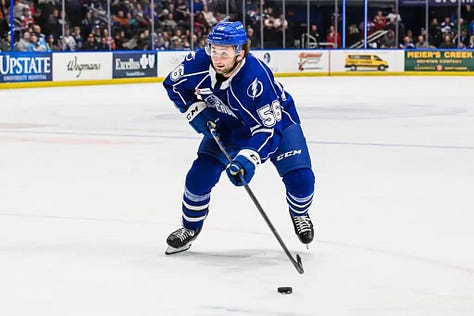
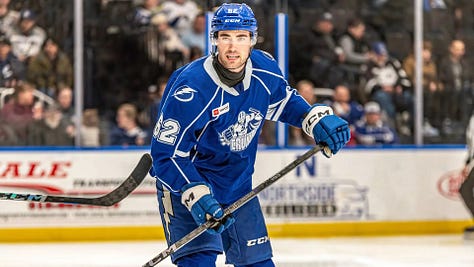
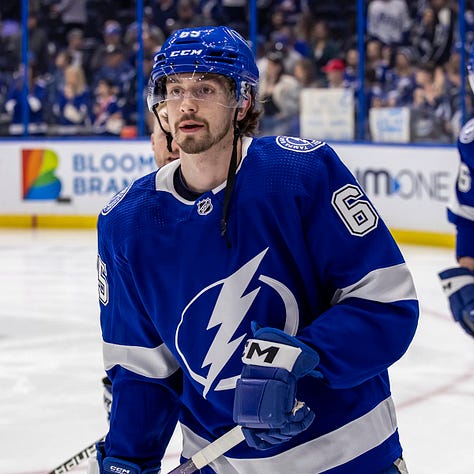
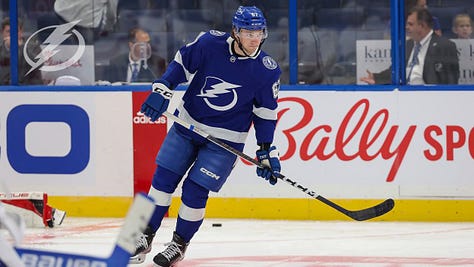
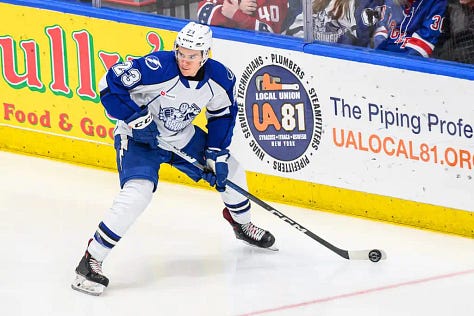
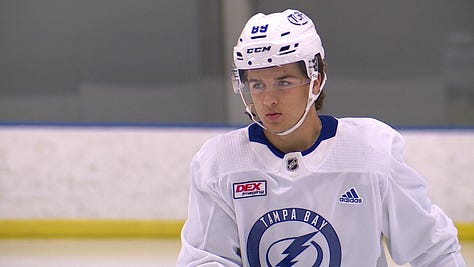
HOW TO FOLLOW CRUNCH / SOLAR BEARS:
The best way to follow the AHL/ECHL Lightning affiliates is through their respective websites:
Furthermore, FloHockey allows you to follow every AHL game:
Follow the AHL/ECHL on X:
Thanks for reading Bolts Breakdown. My goal is to help you follow the Tampa Bay Lightning - I write weekly, covering the Bolts & delivering it right to your email. Hopefully each publication allows you to understand the Lightning & stay up-to-date with all the latest news. If you enjoyed this coverage, please share BoltsBreakdown with a friend or two. Your support means a lot to me - thank you!
The NHL schedule is released after the conclusion of the Stanley Cup Finals, typically late June or early July.
Stacy Roest is no longer with the organization, thus no longer serves as the Crunch’s GM. That position still has not been filled as of June 14th, 2025.





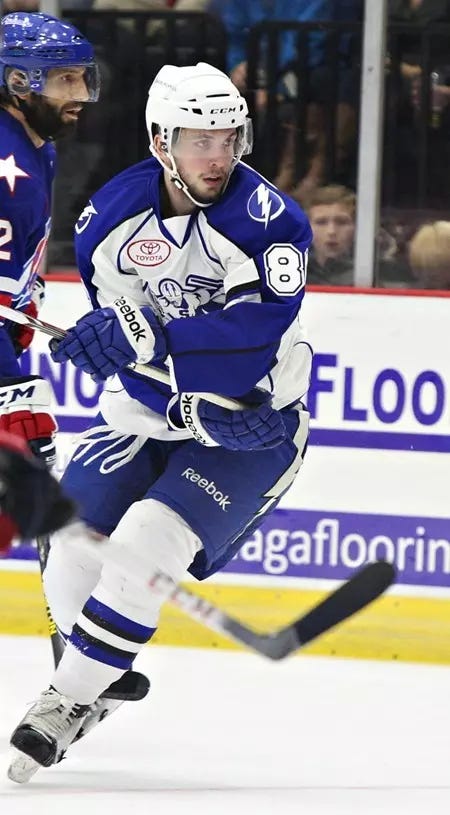








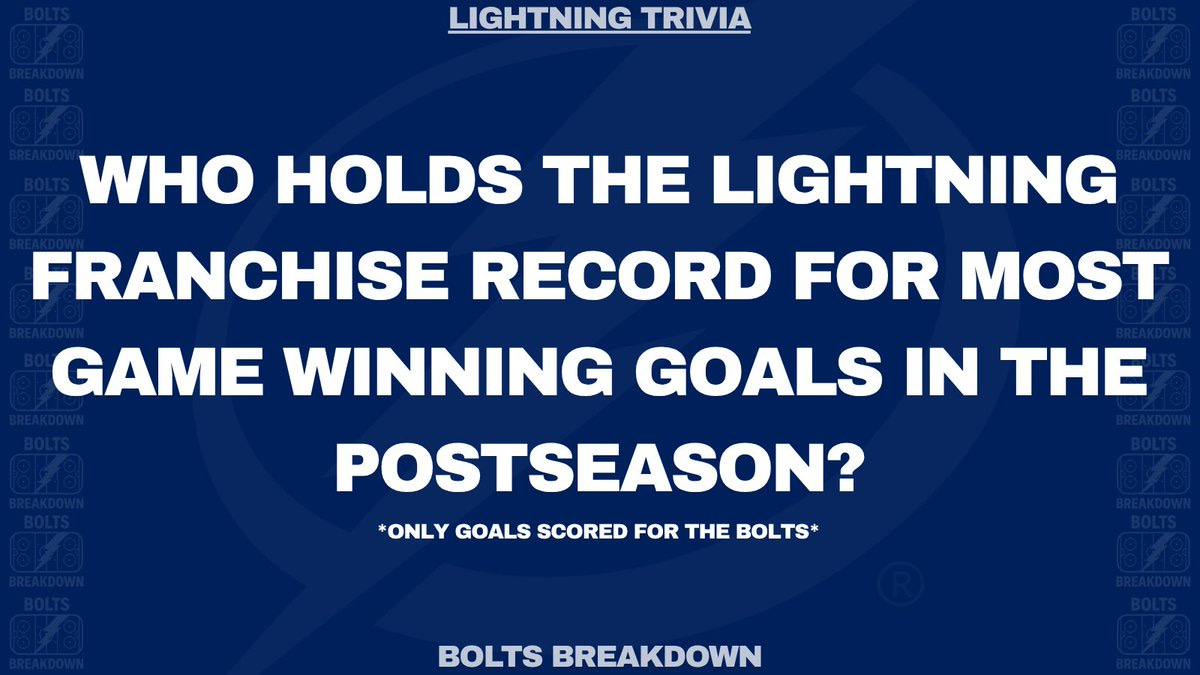
I was always wondering about this!
This is super cool to learn about! Thank you!